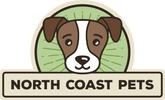Feeding A Raw Diet
Dec 6th 2019
Canines, or Canids, are carnivorous mammals. They have teeth called incisors used for ripping and tearing raw flesh or meat. The domesticated canines, or dogs, of today have the same tooth and jaw structure as their ancestors, the wolves, who lived and thrived upon raw meat, meaty bones and the predigested foods (such as grasses, leaves, berries and seeds) of their prey. In addition, the large intestine of all canines, both wild and domesticated, is short and straight by nature indicating the biological makeup of a carnivorous eating mammal. This canine trait, a straight large intestine, is vital to the health of carnivorous mammals. By passing foods more quickly, the digestive period of foods is shortened, leaving very little chance of harm from potential bacteria.
A raw diet recreates the way our pet's ancestors have eaten in the wild for thousands of years. Dogs and cats are carnivores. Left to their own devices, their typical daily diet, like that of their wild cousins (wolves and the big cats), would involve catching (or finding) and eating another animal. A raw diet returns our pets to this more natural form of nutrition, as if they had hunted and caught their "perfect" dinner.
When a carnivore eats an herbivore (plant and grass eating animal) like a rabbit or a deer, the carnivore eats some meat, some bone, some organ meats (liver, heart, kidney, etc.), and a small amount of green vegetation contained in the herbivore's digestive tract. These ingredients are the four main food groups of a good raw diet.
- Fresh, raw meat
- Some uncooked bone
- Some raw organ meats
- Some green vegetation
What about kibble?
Until recently, many people thought kibble (grain-based dry food) diets were fine. They are readily available, easy to store, convenient, reasonably inexpensive and most pets seem to enjoy them.
But within the last 15 years, concerned owners began to notice an increase in certain diseases among pets. More pets seemed to be suffering with diseases like diabetes, cancer, joint disorders, skin issues and dental problems. And they were showing evidence of these diseases at a much earlier age. There had to be a reason.
One of the primary suspects was diet. Natural diets were replaced with highly processed pet food diets based on grain products (kibble), rather than meats, organ meats, bones and vegetables. That's what had changed so dramatically and the change coincided with the increase in these diseases.
Most dry commercial pet foods are at least 50% (or more) grain because the carbohydrates are needed to hold the food together. But as The Merck Veterinary Manual tells us, dogs and cats have "no dietary requirement for carbohydrate". Does it make sense to feed our companions diets made of 50% or more of a substance they don't even need? Additionally, carbohydrates are metabolized by the body to glucose (sugar), which is known to feed cancers, diabetes, and some of the other disorders that now seem to be commonplace among our pets.
As well, most kibble has a low percentage of the high quality meats, organ meats, bones and vegetables a pet needs for good health. Yes, meat and other proteins are added to most kibble formulas, but at a much lower level than is available in a good raw diet.
Unfortunately, many commercial products also use condemned or sub-standard meats as the protein ingredient in their formulas and they are processed at very high temperature under very high pressure, which further reduces the nutritional value.
Will an all-kibble diet satisfy your pet's immediate hunger?
Yes.
But is an all-kibble diet good for the long-term health of your pet?
No.
Dog and cat owners who have already switched to raw, and a small but growing number of veterinary professionals now feel that kibble may sustain life, but may not promote health. They believe that whole, natural foods are the most likely to result in:
- A longer life span
- The decreased possibility of a debilitating disease at an earlier age
- Lower veterinary bills and dental problems
- An overall increase in energy
Does this mean you should stop feeding kibble?
Not necessarily.
Feeding an all raw diet is the ideal. But if for some reason, you can't feed all raw, feeding some cooked, canned or kibble foods, as long as they are high quality, is fine. Just aim for the ideal as often as is possible for you. .
Whether you decide to feed 100% raw or a combination, the idea is to feed a variety of high quality foods that includes all four of the main pet food groups important to better pet health.


